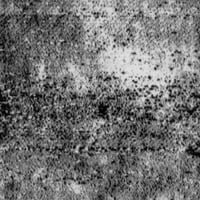The Biggest Bomb in the World
The largest nuclear weapon ever tested was Tsar Bomba, a 50-megaton device detonated by the Soviet Union in 1961. That made it “3,300 times as powerful” as the bomb dropped on Hiroshima — an almost unimaginable level of potential destructive power. But Tsar Bomba wasn’t even close to being the biggest nuclear weapon ever conceived. Meet Project Sundial, courtesy of Edward Teller, one of the inventors of the hydrogen bomb, and his colleagues at Los Alamos:
Only a few months later, in July 1954, Teller made it clear he thought 15 megatons was child’s play. At a secret meeting of the General Advisory Committee of the Atomic Energy Commission, Teller broached, as he put it, “the possibility of much bigger bangs.” At his Livermore laboratory, he reported, they were working on two new weapon designs, dubbed Gnomon and Sundial. Gnomon would be 1,000 megatons and would be used like a “primary” to set off Sundial, which would be 10,000 megatons.
10,000 megatons. In the video above, Kurzgesagt speculates that exploding a bomb of that size would result in a fireball “up to 50 kilometers in diameter, larger than the visible horizon”, a magnitude 9 earthquake, a noise that can be heard around the entire Earth, a 400 km in which everything is “instantly set on fire – every tree, house, person”, and, eventually, the deaths of most of the Earth’s population.
Sundial would bring about an apocalyptic nuclear winter, where global temperatures suddenly drop by 10°C, most water sources would be contaminated and crops would fail everywhere. Most people in the world would die.
Fun fact: Edward Teller was one of Stanley Kubrick’s inspirations for the bomb-giddy character of Dr. Strangelove in the 1964 film of the same name.





Comments 0
Hello! In order to comment or fave, you need to be a current kottke.org member. If you'd like to sign up for a membership to support the site and join the conversation, you can explore your options here.
Existing members can sign in here. If you're a former member, you can renew your membership.
Note: If you are a member and tried to log in, it didn't work, and now you're stuck in a neverending login loop of death, try disabling any ad blockers or extensions that you have installed on your browser...sometimes they can interfere with the Memberful links. Still having trouble? Email me!
In order to comment or fave, you need to be a current kottke.org member. Check out your options for renewal.
This is the name that'll be displayed next to comments you make on kottke.org; your email will not be displayed publicly. I'd encourage you to use your real name (or at least your first name and last initial) but you can also pick something that you go by when you participate in communities online. Choose something durable and reasonably unique (not "Me" or "anon"). Please don't change this often. No impersonation.
Note: I'm letting folks change their display names because the membership service that kottke.org uses collects full names and I thought some people might not want their names displayed publicly here. If it gets abused, I might disable this feature.
If you feel like this comment goes against the grain of the community guidelines or is otherwise inappropriate, please let me know and I will take a look at it.
Hello! In order to leave a comment, you need to be a current kottke.org member. If you'd like to sign up for a membership to support the site and join the conversation, you can explore your options here.
Existing members can sign in here. If you're a former member, you can renew your membership.
Note: If you are a member and tried to log in, it didn't work, and now you're stuck in a neverending login loop of death, try disabling any ad blockers or extensions that you have installed on your browser...sometimes they can interfere with the Memberful links. Still having trouble? Email me!